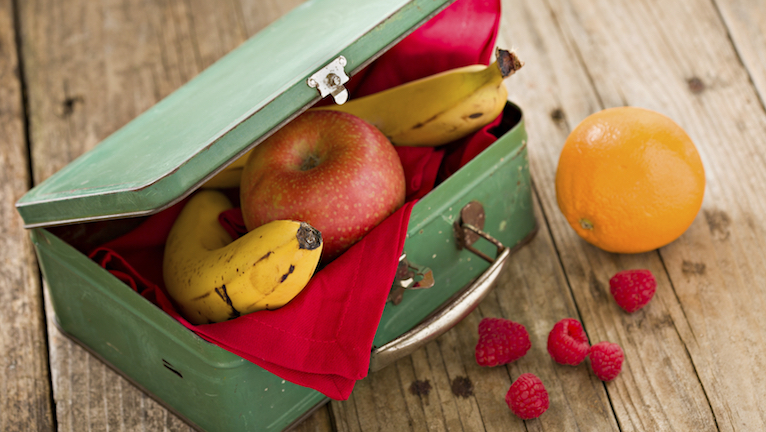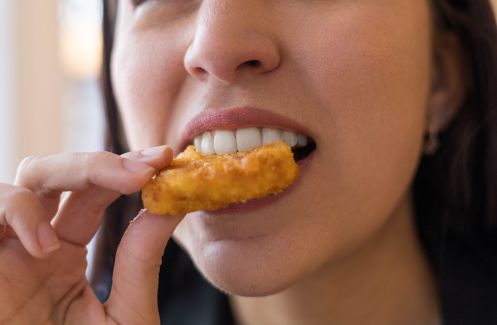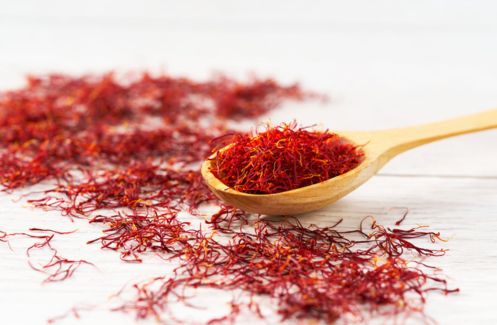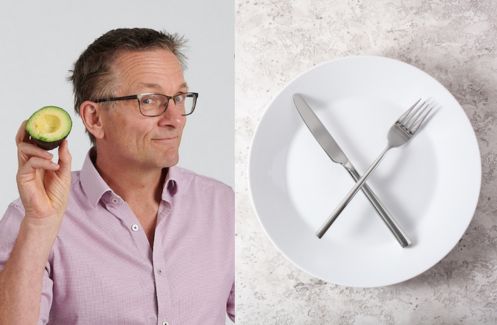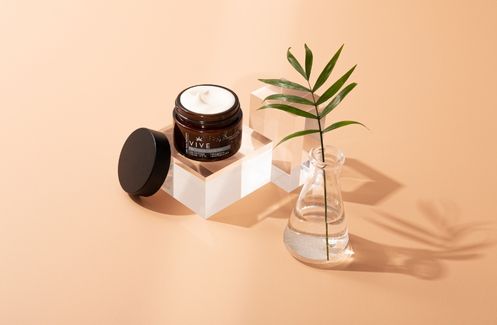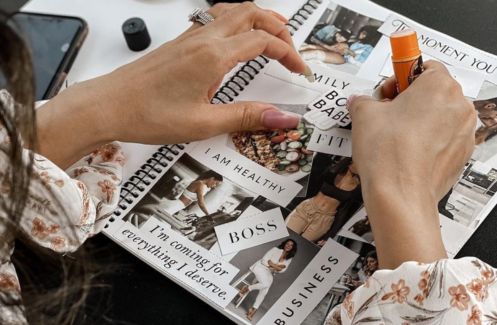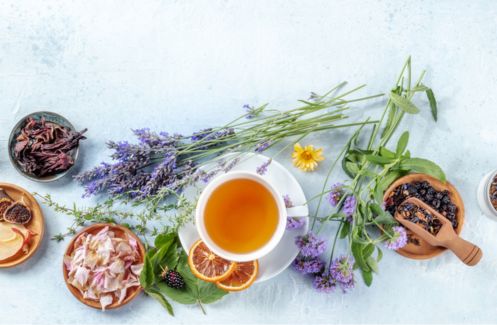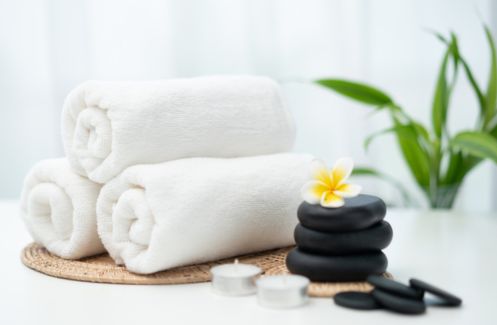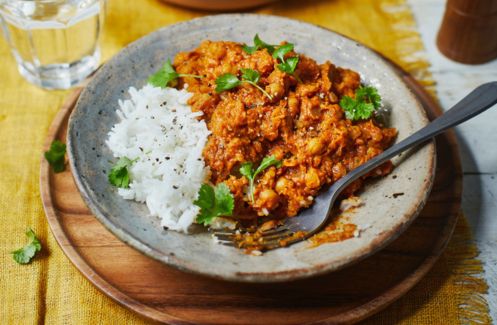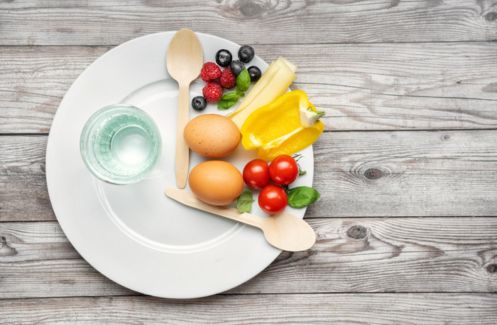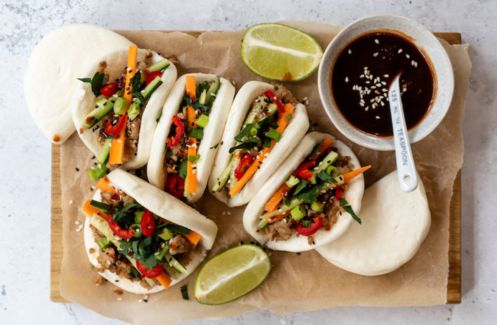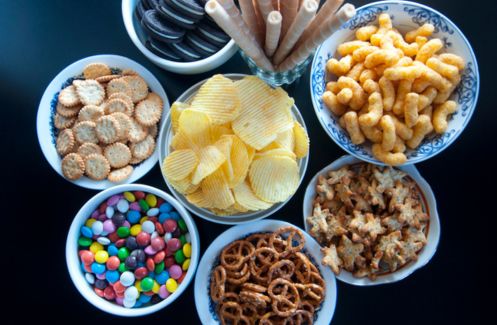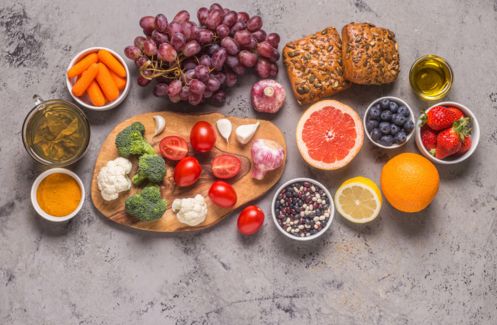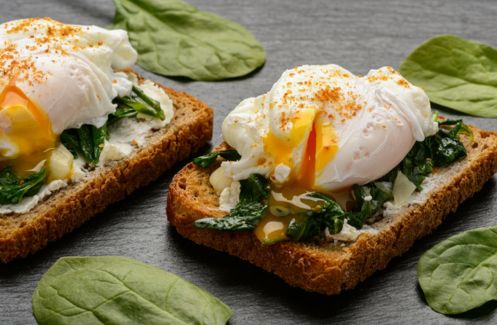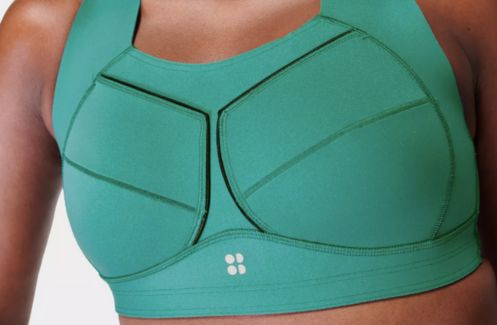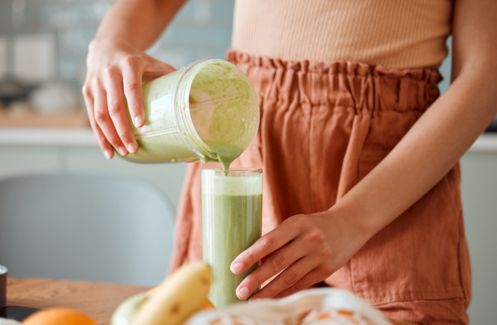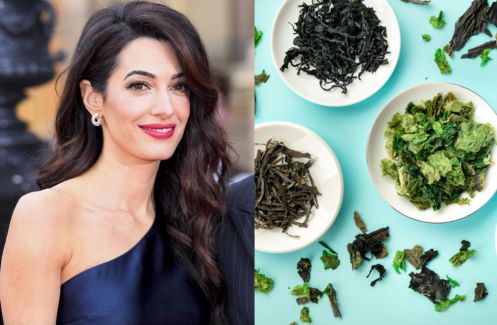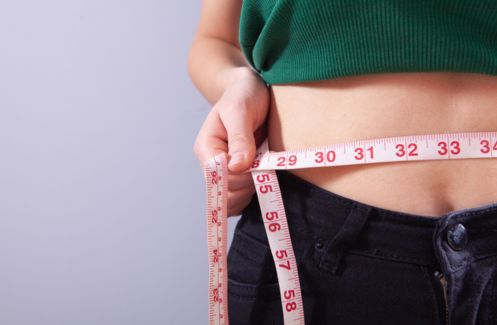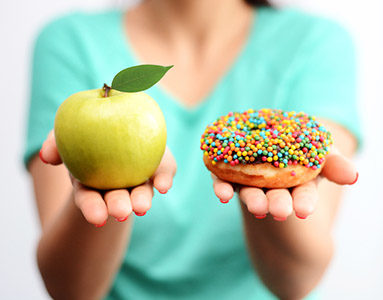What makes a healthy lunch? If you find yourself battling sugar cravings and 4pm energy slumps, your lunchtime meal could be to blame. Nutritional therapist Charlotte Watts explains how to make your lunch work for you
How often do you find yourself working over lunch or suddenly noticing that lunchtime has simply slipped by as you’re absorbed in a task?
It can seem all-important to get that job done and stopping for lunch can slip way down in priority. So if you ever find yourself gulping down a sandwich you barely taste over your keyboard, read on.
The reality is that taking time away from work and nourishing your brain is the intelligent choice – skipping lunch and ploughing on is actually a false economy, leaving you depleted resources and the reduced focus that low blood sugar can bring.
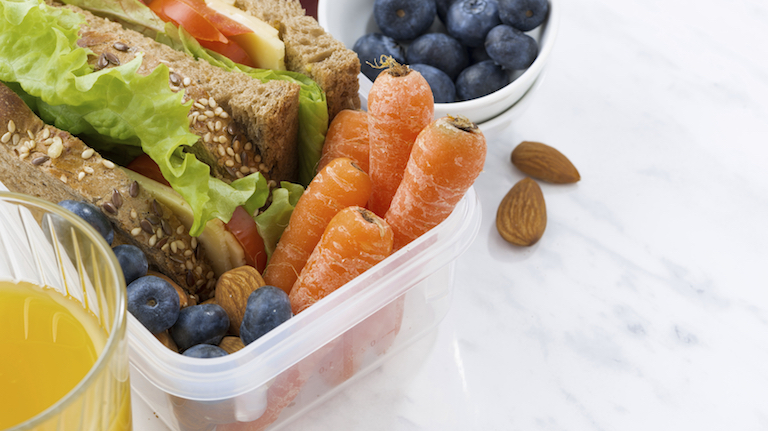
Bupa research has shown that only 30% of the average workforce taking an hour’s lunch, feeding into 48% feeling their productivity levels slump in that tricky mid-afternoon slot where they lose nearly 40 minutes of work time.
That higher number suffering the 3-4pm energy slump can also be traced back to stress levels and skipping breakfast.
Along with missed lunch, these factors all add up to an interrupted supply of energy that results in focus, concentration and motivation taking a nosedive too.
When we don’t take in enough sustaining food to allow consistent fuel to our brains, we also become prey to quick-fix refuelling with caffeine and sugar – yes with an instantaneous energy hit but usually with a price as we can make less rational decisions and make more mistakes before the crash hits!
So taking a work time lunch really does oil the wheels and if that’s a healthy lunch all the better to keep up that brain fuel for the afternoon.
What is a good lunch?
It’s important to know what we need from a lunch. This all-important break in the working day is there to provide us with many things; downtime for the brain, perspective, recuperation and sanity to name a few.
The food we choose to include within it needs to reflect the activities before and after in terms of energy, the nutrient requirements our body needs on a regular basis and satisfy our tastes and preferences.
If we can get all of these right, the day runs smoothly, we feel that we can cope, have focus and that life has ease and contentment.
Knowing your healthy lunch criteria
So we’re talking about satisfying several factors here. Choosing a meal isn’t just about what we’d like as a knee-jerk reaction, otherwise our primal fat and sugar drivers (quick, fuel up!) would just run the show and we might alternate between fish and chips and pizza.
If we’re thinking about what really suits us, it’s what we like but also leaves us feeling happy with our choice, full but not bloated or nauseous and replenished and ready to ease back into an active mode.
The motivation on what to choose to eat on different days might change, but the desire to feel good after eating probably won’t.
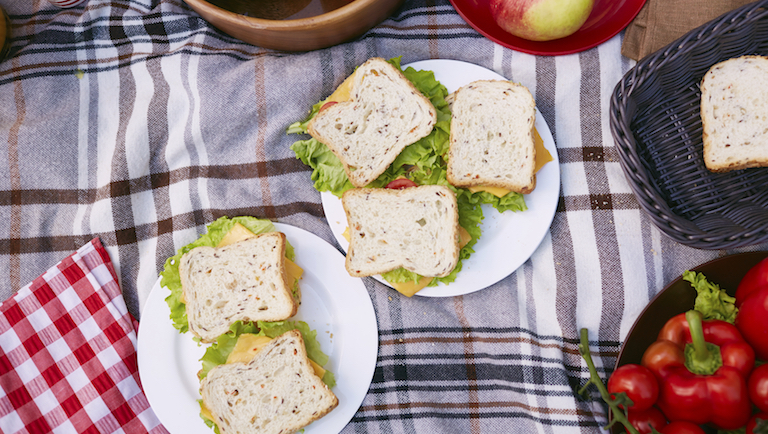
Protein
This dense food group drip-feeds energy to the brain, helps us cope with stress and low levels at lunch are associated with 4pm sugar cravings:
- The best work lunch is based around a protein portion that leaves your body and brain feeling satisfied; meat, fish, eggs, goat’s cheese are the densest sources of animal foods.
- For vegetarians, ensuring some eggs and dairy (if tolerated) may be needed if stress levels and brain demands are high.
- Beans and nuts are the highest plant sources and a good idea for vegans to include.
Plant power
Always include two vegetable or salad portions – ensure the slow-release energy from plant fibres with the best brain and mood supporting minerals, alongside protective antioxidants that help our bodies maintain optimal health in the face of stress:
- A portion is about the size of your palm and adding in an extra veg or salad option is always the best way to bulk out a meal.
- Vary your vegetable sources and their colours for the full spectrum of brain and mood nutrients.
- Remember that achieving your ‘five- a-day’ is difficult if you skip a portion at lunch. Ideally ‘eight-a-day’ (around 5-6 vegetable, 2-3 fruit) is good to aim for if you’re used to including loads and particularly if you’re exercising often and need higher levels of antioxidants to support recovery and prevent injury.
Healthy fats
Feed your brain – your brain is mostly fat and needs those restocking for good neuron communication:
- We need a variety of different fat sources in our diets. A balanced mix of vegetables, nuts, eggs, meat, fish, olive oil, butter, coconut and avocado across days and weeks allows the body and brain to feel satisfaction that aids smooth mental function and keeps us away from those sugar cravings. Prioritise organic (and ethically sourced) animal produce wherever possible.
- Omega 3 oils from oily fish are the most important brain essential oil; without them we can find attention span, memory and cognitive function suffer. At least two lunches that include salmon is a good start; a krill oil supplement can supply the phospholipid form that is most easily incorporated into the brain. There are also now algae forms (algae DHA) for veggies and vegans.
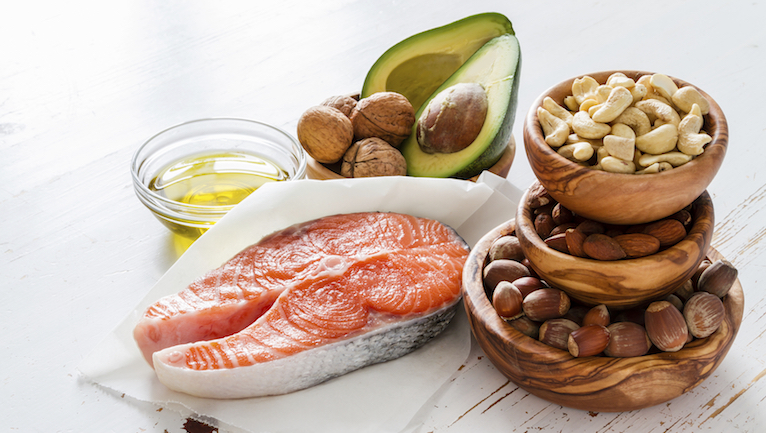
You need to enjoy what you eat
When you’re choosing your lunch, as often as possible start with pleasure. This is your break from work and you need to be enjoying what you eat.
Food has taste for a reason; it lets us know what is safe and which combinations of sweet, sour etc. have entered our bodies.
If we don’t enjoy what we eat we are missing out on motivational brain chemicals that tell us all is well, like dopamine and serotonin
In this way our brains can begin to register if the mixture of food our body is receiving is going to satisfy our needs.
Generally if we eat foods that give instant gratification or a ‘quick-fix’, we get that rush of beta-endorphin pleasure that is short-lived and won’t sustain through the afternoon. So the pleasure needs to be satisfying on a deeper level; your body registering it’s had what it needs.
If we don’t enjoy what we eat we are missing out on a whole host of motivational brain chemicals that tell us that all is well, like dopamine and serotonin.
So remember or write down foods you deem as healthy and that you also enjoy. That way you can base your choices around these on days where low energy may have you seeking those that leave you feeling ultimately dissatisfied.
Variety is the spice of life
It’s often easier to get into the same old routine and even more so when we’re stressed, but our bodies thrive on food variety – it’s how they ensure a spread of nutrients, lessen the likelihood of intolerances to seeing the same old food and keeps up the pleasure principle by avoiding boredom.
Keeping your mind open to change also means that you choose what suits you on that day, not just what you’ve got into picking up automatically.
How to choose the lunch for you
The key to finding what suits you is remaining open-minded and paying attention to how you feel after particular choices.
What we eat creates ripples for a long time after; noting afternoon cravings, how you feel in the evening and even how you sleep later all provide clues.
Eating your food mindfully helps to attune you to what your body needs. Then experimenting with curiosity can highlight the energy, focus and satisfaction effects that you feel from different food choices and combinations.
Keep making note of what works, so you can always come back to a happy default ‘back on track’ choice when things may go awry!
A little connecting in to how we feel before we choose our meal can create that pleasure, satisfaction and sustaining energy that makes up the perfect lunch. Consider the following to guide you:
1. “’ feel stressed from the morning’
It could be easy to load up on the starchy carbs like bread or pasta here but your brain is crying out for healthy fats to help it cope and to stop you self-medicating on sugars later on.
Base your meal around oily fish like salmon or egg with at least the same amount as the carb part. Satisfying fats like nuts, seeds, avocado and coconut also provide textures that provide a sense of luxury and fulfillment.
Example: salad with loads of green leaves, goat’s cheese, walnuts, avocado, beetroot and plenty olive oil – you can make as a salad from the night before or make at work if possible. There are some good variations of this in high street chains now.
2.‘I want to feel more energised without ruining my weight loss efforts’
If you’ve been holding back on the calories, but are also working hard, you may not have been providing your brain with the fuel it needs. Before you have a bingeing backlash, have a hearty meal that lets your body know there is food available to you and it can relax.
Sometimes that might mean something warm and a bit old school like a stew and sometimes like adding great big veg like broccoli, cabbage and kale. These kind of choices work well taking a wide thermos flask to work.
Example: Thai green curry with tofu, chicken or prawns, coconut milk, plenty veg and optional brown rice. Last night’s stew or curry works well for lunch the next day; even order more of a good quality Indian or Thai take-away.
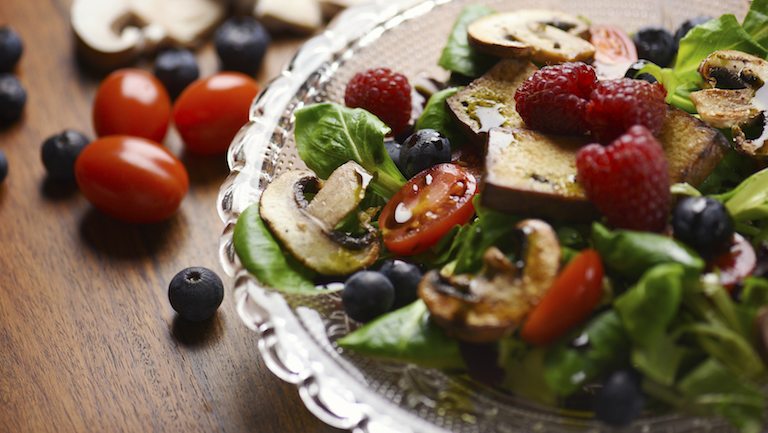
3. ‘I’ve exercised and feel ravenous’
Firstly, it is crucial to replenish muscle after exercise so carry nuts or a protein bar or shake with natural ingredients. Don’t allow yourself to hit a wall where you run out of energy available to your muscles and brain; that will make your exercise a stress rather than a boon to your health.
Ensuring something that supports blood sugar levels throughout exercise can stop you making choices based on a crash afterwards.
A piece of fruit, or a smoothie with veg before exercising can help you have the wherewithal for healthy choices later; including the protein needed for replenishment of fuel stores and muscle build-up.
If it suits you, adding a starchy carb portion like brown rice, quinoa or sweet potato ensures energy that also allows you to work to your best potential and one or two vegetable portions provide antioxidants and minerals to help prevent injury.
Example: a brown rice or quinoa salad with chicken or egg for protein and plenty of greens; sulphur food like meat, onions and beans also help muscle build-up through collagen production and this needs vitamin C from plenty of veg like broccoli and red pepper.
4. ‘I’ve already snacked and don’t feel that hungry’
It’s never a good idea to force food in – it really doesn’t help the digestive processes! Something light like a salad or hearty soup ensures we don’t have a blood sugar crash in the afternoon and if you can wait a little later for lunch to regain your appetite, all the better.
Snacking less and allowing yourself to feel hunger (as long as you’ve had breakfast), helps create intuition for what you need. Healthy hunger builds slowly and doesn’t leave you desperate to grab any old c*&p by the time you stop for lunch.
Example: good quality soup from the high street is becoming easier to grab, with good choices available with beans like lentils that can feel light but still sustain energy well through the afternoon.
5. ‘I just want to eat rubbish today’
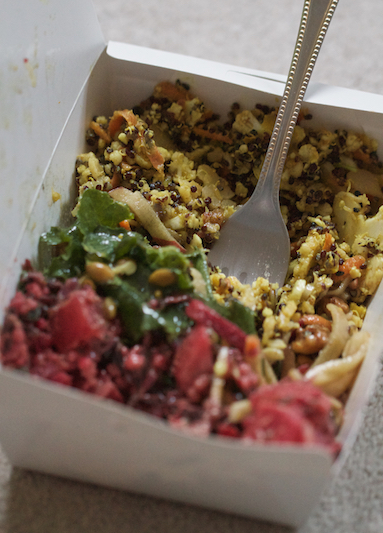
Compromise is the key word here. To acknowledge this knee-jerk reaction (maybe to stress or anger?) look for some middle-ground where you can eat something that feels indulgent, whilst acknowledging that your brain probably needs some nutrient support for those cravings.
Having some starchy egg pasta or quinoa alongside filling protein with a vegetable portion won’t be ‘rubbish’ but it will satisfy that itch.
You can always have the option alongside vegetable crisps or a baked potato to give that full feeling that stops brain seeking compulsions.
Example: a simple baked potato with a filling like tuna or cheese ‘n’ beans isn’t the top of the healthy list, but certainly not the worst thing either. This can hit that spot that otherwise might be filled with chips or the most gloopy wrap in the shop.
6. ‘I’ve ‘been good’ all week and just want to have what I want’
Is what you want also what you need? There are levels here and we can get overcome by those quick-fix urge if we view health as a fad that we have to do, but don’t really value.
It’s no bad thing to indulge ourselves every so often but if that can also leave us feeling positive after, all the better. So have the indulgence and practice damage limitation with a side salad or simple bag of rocket or watercress leaves and some olive oil.
Example: if there’s a traditional type meal that really does it for you, this might be the time to go for the cottage pie, fishcakes or burger (or veggie one) – adding lots of veg to anything really changes the balance of helping your body to cope rather than crash through the afternoon.
7. “I don’t really know what I want”
This is the best time to try something new, what have you got to lose? Is there something you’ve looked at with curiosity but then gone for your old favourite? It may be that you’ve got a little bit bored and need to shake things up a little – what’s the worst that can happen?
Example: maybe try sushi if you haven’t before or that new Vietnamese street food place… or anything just a little outside your own taste and habit box!
CHARLOTTE WATTS’ is a nutritionist and yoga teacher whose work has focussed on how nutrition and yoga can meet to help people cope with the type of demands we face in the 21st century.
Her practice and teaching of mindfulness weaves these together and has culminated in her new book The De-Stress Effect: Rebalance Your Body’s Systems for Vibrant Health and Happiness.
She has also authored The De-Stress Diet (with Anna Magee), 100 Top Recipes for Happy Kids, 100 Best Foods for Pregnancy and 100 Foods to Stay Young.
Relevant Healthista Content:
Fitness sensation Krissy Cela reveals 10 tips on getting back into the gym post lockdown
10 ways to boost sexual confidence post-lockdown
11 simple ways to de-stress during self isolation
Self-isolation – 7 steps to make your home a feel good space
Healthista Content you may also like:
Need an energy boost? Start your day with one of these 5 easy recipes
Feeling tired all the time? This one minute energy boost will do the trick
Tired all the time? These 11 energy foods will help
3 energy tips this TV doctor wants you to know
Like this article? Sign up to our newsletter to get more articles like this delivered straight to your inbox.



